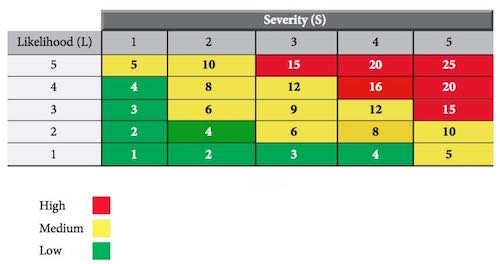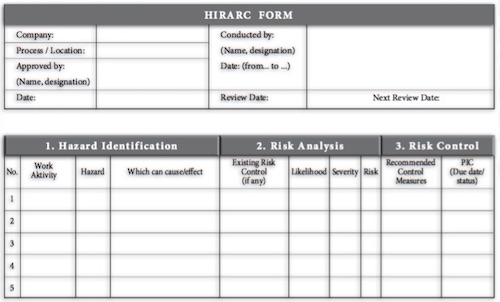Hazard identification and assessment methodology shall include:
a. Steps and time frame for identifying and assessing the hazards.
The steps for the identification of hazards and the period of time for this identification must be specified. The following information should be included:
i. who will be responsible for the identification: for example, it may be the safety and health committee at the workplace, or the person appointed by the committee;
ii. how identification reports are processed: for example, they may be compiled and processed by the committee, or by individuals appointed by the committee; and
iii. the identification time frame: for example, the identification of hazards for workshop A must be completed in December, for workshop B in April and for workshop C in November.
b. Hazard Record-keeping.
After the identified hazard, hazard identification records must be made and kept, whether in print or in electronic format.
c. The time frame for reviewing and, if necessary, revising the methodology.
Dates to check identification: for example, the revision identification method will be conducted every three years.
To complete the identification of hazards, several techniques can be used to identify the hazard. Some examples of techniques including, but not limited to:
i. inspection at the workplace;
ii. task safety analysis or job hazard analysis;
iii. preliminary investigations;
iv. potential accident factors;
v. failure analysis;
vi. accident and incident investigations.
It's up to you to use your own process and your own identification techniques to suit the management procedures and the size of the work done. In fact, the identification method may vary depending on the size of the workplace.












